There are 27 good companion plants for kale in this list along with 11 plants to be avoided, which include varieties of alliums, flowers, vegetables and more.
If you are wanting to plant some kale in your garden, you’re going to need to know what to plant near it and what to avoid growing in the same area. Keep reading to know more about good and bad companion plants for kale.
Also known as leaf cabbage, kale is a cultivar of the common cabbage. It is cultivated for its edible green or purple leaves, which do not form a central head like the cabbage, or for use as an ornamental plant.
Raw kale leaves contain about 84% water, 8.8% carbs, 4.3% protein and trace amounts of fat (0.9%). As other cruciferous vegetables do, they contain lots of vitamins and minerals while also being very low in calories.
Kale supplies the vitamins A, B1 (thiamine), B2 (riboflavin), B3 (niacin), B5 (pantothenic acid), B6, B9 (folate), C, choline, E and K, calcium, iron, magnesium, manganese, potassium, phosphorus, sodium and zinc to the body.
Adding kale to your diet can bring about several benefits to your body and general health, like stronger bones, eyes and immune system, protection from colds and chronic diseases, formulation of blood clots, building of bones and assisted brain development.
For the best results when planting this vegetable, grow it in a spot where it will receive full sun. Keep its soil moist, and this soil must be well-drained and fertile (rich in organic matter), with a pH of 6.5 to 6.8.
Kale is prone to pest infestation, nutrient deficiencies and bacterial diseases. It is attacked by aphids, cabbage loopers, flea beetles, harlequin bugs, diamondback moths, cabbage maggots, cutworms, thrips, alternaria leaf spots, armyworms, whiteflies and others.
There are however several other crops which may be planted with it in your garden to encourage its growth, help keep pests away, attract useful insects, replenish soil nutrients and provide ground cover or shade from sunlight.
Such grouping for the purpose of sharing benefits is called companion planting. It is a tried and true method, ensuring for years that crops are grown with some other crops that help them grow healthy.
In this article, you will learn about twenty seven (27) good companion plants and eleven (11) bad companion plants for kale in your garden. Also explained below are reasons why they are or are not ideal beside your plant.
Table of Contents
Good Companion Plants for Kale
Alliums
1. Chives

Chives are flowering plants in the genus Allium, to which some other aromatic plants like garlic, onions and shallots also belong. They are cultivated for the edible leaves and flowers they produce, which are then used to season food.
Like other alliums, they are good companions for kale in the garden for their effectiveness at controlling pests. Chives and other alliums contain sulfur, the natural anti fungal and antibacterial compound.
Chives help control both pests and diseases. They deter aphids, flea beetles, mites, deer, gophers, groundhogs and rabbits. They also have stunning purple-pink flowers that attract insects to aid pollination and control pests.
They can also benefit your kale by preventing soil erosion. Their dense roots help your soil stay in place but they spread very fast. Consider using a physical barrier in the soil to make sure the chives are not detrimental to your kale.
2. Garlic
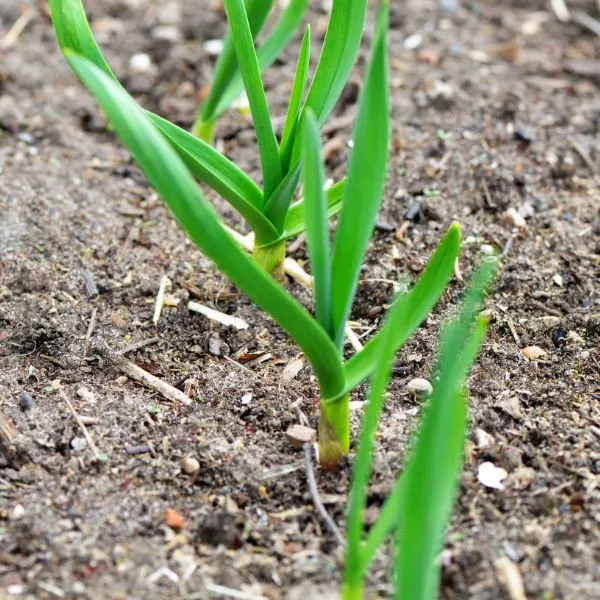
Just like chives, leeks, onions and shallots, garlic is a plant in the genus Allium. The flowering plant has a pungent bulb divided into cloves which is used to season food or make an oil sprayed to deter pests.
Garlic is a very good companion plant for kale. Because it contains sulfur, the allium has a strong smell and can prevent the infestation of pests, fungal diseases and bacterial infections.
With this strong scent, garlic can prevent many animal and insect pests from destroying your kale. Also, garlic is said to improve the flavor of kale and other garden veggies if they are grown side by side.
3. Leeks
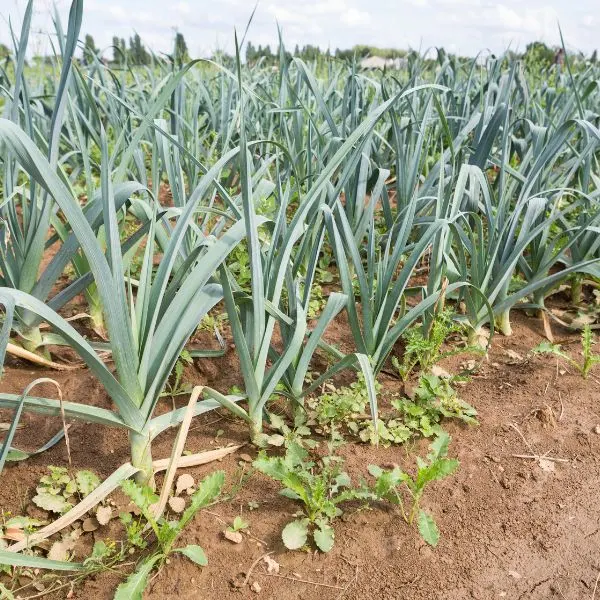
The leek is another flowering plant within the genus Allium. It possesses a large and slender white bulb and flat dark green leaves that overlap. Like other pungent members of its family, it is used in cooking.
Leeks are some of the best companion plants for kale. They can help to repel some natural predators of this plant, like aphids, flea beetles, deer, gophers, groundhogs, rabbits and other foraging rodents.
Their sulfur content lends them their pungent smell, which most insects hate, and their strong, sharp and stinging taste, which deer and rodents hate. The flowers of leek plants also attract pollinators to help your kale reproduce.
4. Onions
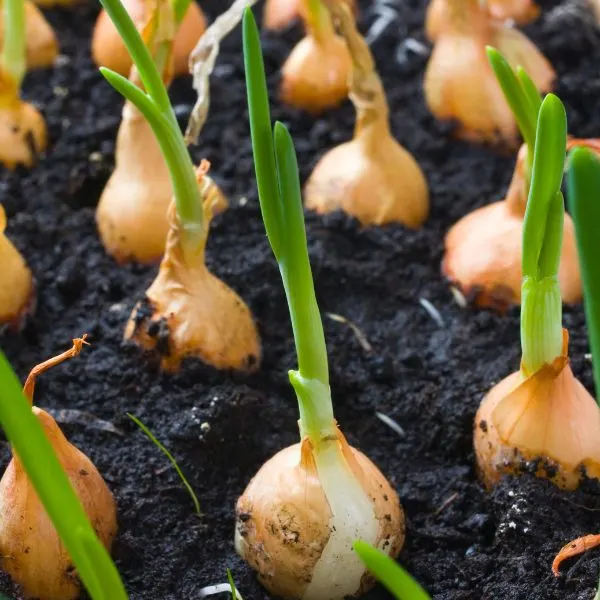
An onion is a flowering plant in the genus Allium with bluish-green leaves and a bulb at its base. This bulb is made up of shortened underground stems and fleshy modified leaves. Onion is the most widely cultivated vegetable in its genus.
Onions are able to deter several pests like aphids, beetles, deer, rabbits, weevils and whiteflies because they have natural fungicidal properties that can help protect kale from several fungal diseases.
The roots of onion plants also break up tough clumps of soil and give your kale space to grow in the soil. It is also believed that the presence of onions improves the taste of kale and other plants when they are grown side by side.
5. Scallions

Scallions or green onions are a species in the genus Allium. They are typically milder in taste than other alliums and lack a fully developed bulb. Their hollow, tubular leaves are eaten cooked or raw as a vegetable.
Like other members of their genus, scallions aid pest control, they may improve the flavor of the kale and the other plants around them, and they attract various useful animals like pest predators and pollinators.
Cucurbits
6. Cucumbers
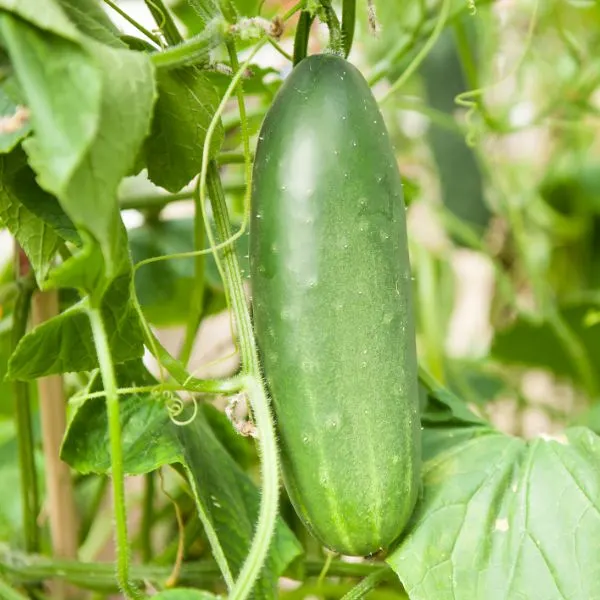
Cucumbers are creeping vine plants bearing cylindrical fruits which are used in cooking as a vegetable or eaten raw. They belong to the melon family Cucurbitaceae and serve as good companion plants for your kale.
Because cucumbers are vine plants that need ground space to crawl and kale plants are more compact, planting them together helps maximize space in your garden. Cucumber can also serve as good ground cover.
They have a strong, sharp odor that keeps cabbage root flies away. They also contain a compound, known as cucurbitacin, that stops the growth of fungal diseases. This way, your kale is somewhat protected from pests and diseases.
Flowers
7. Alyssum

Alyssum is a plant with a sweet scent likened to that of honey. Its beautiful and small flowers are brightly colored, usually in any shade of white, cream, pink or light purple. It is a good companion plant for your kale.
With its pretty flowers, this plant draws beneficial insects to your plant while also keeping the harmful ones away. It reduces the infestation of aphids by drawing in insects like ladybugs and parasitoid wasps to prey on them.
In addition, alyssum attracts bees to your kale and they help with pollination. By doing so, it improves the yield of your crop without inconveniencing it by competing for sunlight, soil nutrients or root space.
8. Calendula
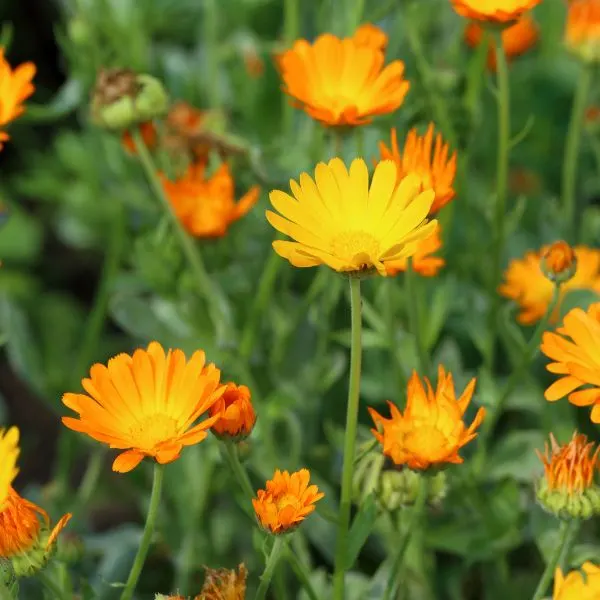
A calendula plant is any of the 15 to 20 species of annual and perennial flowering plants within the genus Calendula. They are members of the daisy family Asteraceae and good companion plants for kale.
Calendula plants, also known as pot marigolds, bear fragrant and beautiful orange flowers that are very astonishing and attractive so they draw in a number of pollinators, including insects and other kinds of animals.
Some pollinators like hoverflies, lacewings and parasitoid wasps double as pest predators. They feed on aphids, thrips and white flies, ensuring that they help with the health of your zucchini. Calendula can also serve as a trap crop for aphids.
9. Hyssop
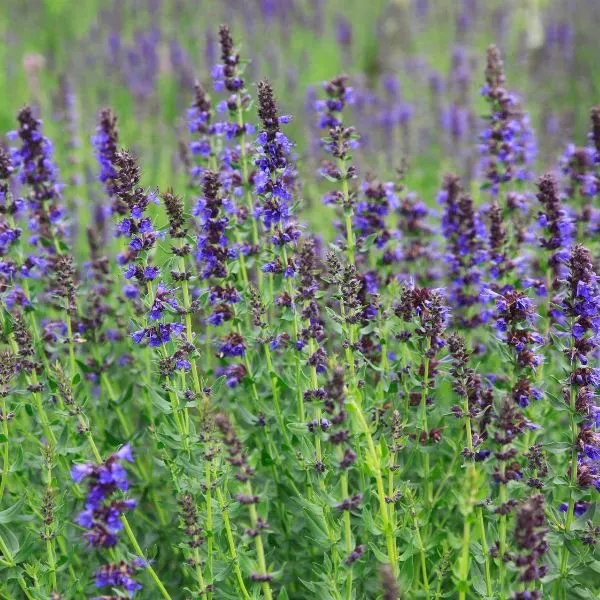
The herb hyssop is a flowering plant in the mint family with aromatic and pungent leaves. The parts that grow above the soil may be used in the making of perfumes, to make herbal medicine, or as a seasoning for culinary purposes.
Hyssop is another plant that attracts beneficial insects to kale plants. It has beautiful flowers which are most commonly purple but there are some individuals which have white or pink flowers
These flowers attract pollinating and predatory insects like bees, beetles, butterflies, hoverflies and parasitoid wasps. Hyssop can also act as a trap crop. It may attract pests to itself so that they do not harm your brassica.
Its aromatic oils repel cabbage moth larvae, flea beetles and slugs. When planted densely, hyssop serves as ground cover, shielding the soil from excess evaporation, retaining its water content and preventing the growth of weeds in the soil. Hyssop and kale also do not compete with each other.
10. Marigolds
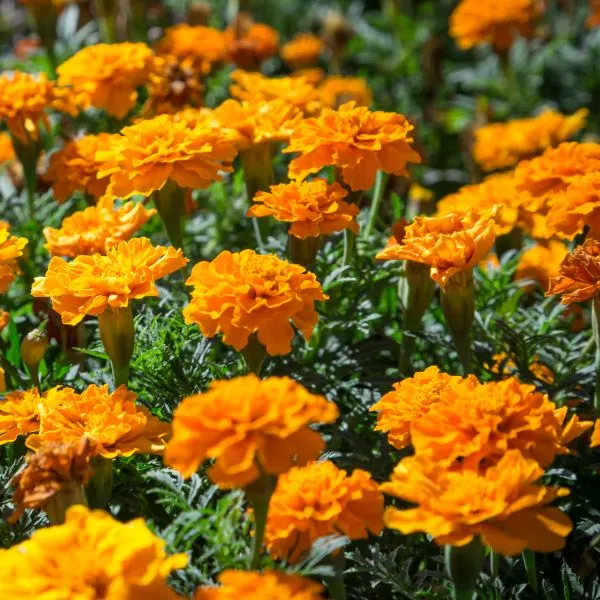
Marigolds are mostly herbaceous flowering annual or perennial plants which belong to the daisy family Asteraceae. Because of their flowers and odor, they are good companion plants for kale.
They have bold and beautiful gold, orange, white or yellow flowers of marigolds are known to attract butterflies, bees and other helpful insects. These insects aid pollination and eat pests in your garden.
Marigolds have a pungent odor and have green feather-like leaves. Their scent helps to repel several insect and animal pests but they may also be utilized as trap crops. They can also be used to fill empty spots in the garden.
11. Nasturtiums
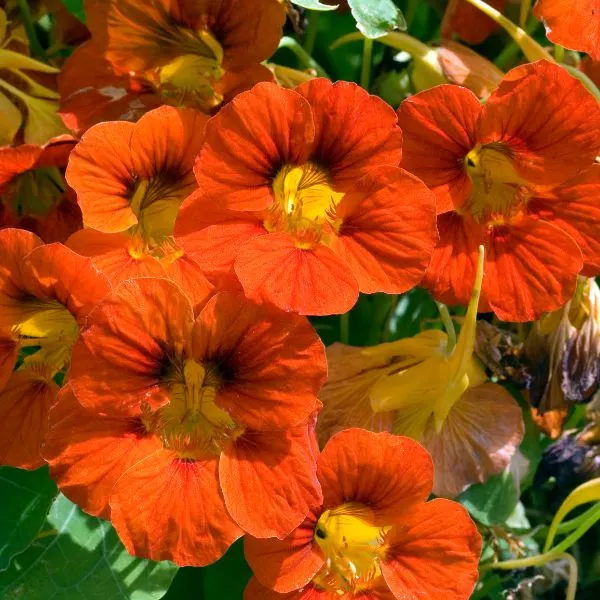
Also known as tropaeolum, nasturtium is a genus of plants that contains several creeping herbaceous plants which may be annual or perennial. These plants have showy round flowers and may be used in herbal medicine or cooking.
Nasturtium is another very good companion plant for kale. It is a natural and powerful pest deterrent. It also serves as a trap crop by attracting pests that could be attracted by kale to itself.
Also, nasturtiums attract predatory insects and pollinators with their beautiful, vibrant red and orange flowers. It is also believed that nasturtiums can improve the flavor profile of kale plants and other plants near them.
Herbs
12. Basil

Basil is a culinary herb belonging to the mint family. Also referred to as great basil, it has a sweet, spicy and slightly peppery flavor. This tender plant makes a very good companion for kale in the garden.
One benefit of planting basil alongside kale is that basil attracts beneficial insects to your garden. Butterflies and a number of other insects that aid pollination or eat harmful crop pests are attracted to this plant.
In addition to bringing useful insects to your kale, basil is also repellent to several harmful insects. Aphids are known to attack brassicas but basil keeps them away. It also deters beetles, hornworms and white flies from other plants.
13. Catmint

Known also as catnip, catmint is a genus Nepeta of aromatic herbs in the mint family Lamiaceae. There exist about 250 species of flowering plants in the family. They have tubular flowers which may be blue, lavender, lilac, pink or white.
Catmint is a good companion plant for kale. It can ensure that several garden pests stay away. Some of these are aphids, mice, rats, squash bugs and weevils. It also distracts cats from other crops.
14. Chamomile
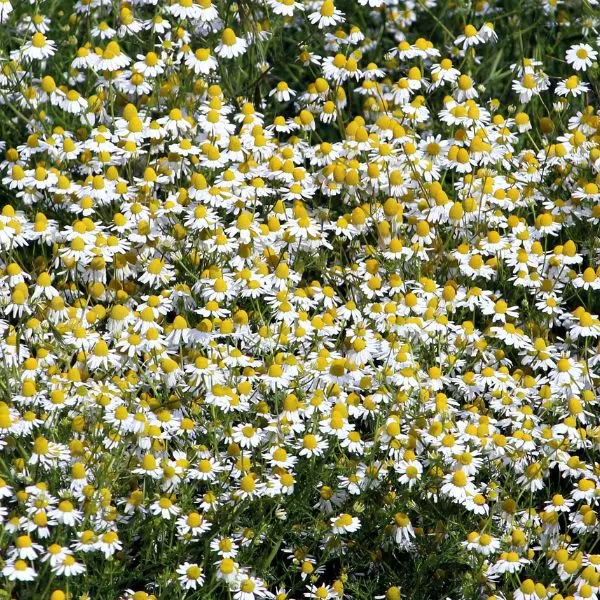
Also spelt “camomile”, chamomile is a flowering plant of the daisy family Asteraceae. It has feathery leaves and flowers with white rays. Parts of this apple-scented plant are made into healthy beverages high in antioxidants.
Chamomile is an excellent herb to plant beside kale. It repels flying insects while also bringing beneficial insects to the crops in your garden. Its flowers attract flower flies to aid pest control and other insects that aid in pollination.
Beneficial wasps, honey bees, hoverflies and lady bugs are some insects that chamomile attracts to your garden. This herb also helps to build beneficial chemicals within the soil.
15. Cilantro
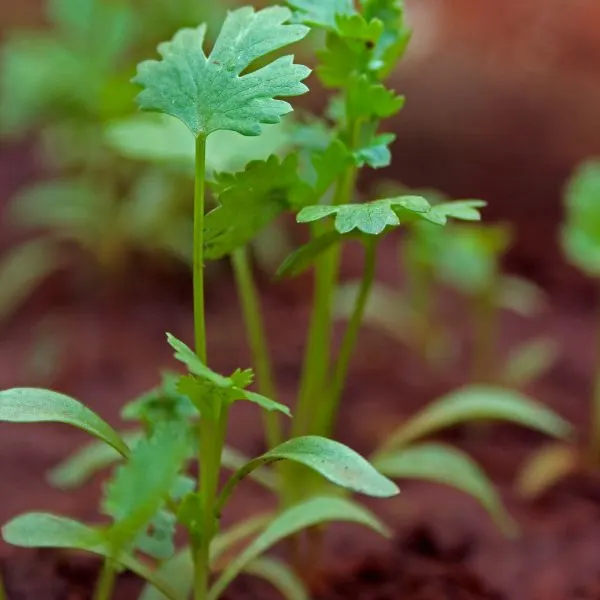
Known also as Chinese parsley, coriander or dhania, cilantro is an annual flowering plant with edible plant parts. The fresh leaves and dried seeds of this aromatic herb are the parts most used for culinary purposes.
Cilantro is a good companion plant for kale. Both plants need to be fully exposed to sunlight and to be grown in moist but not soggy soil. They will grow well together because they have similar growth needs.
The aroma of cilantro also helps to keep pests away. It has stunning flowers that attract both pollinators and insects that prey on pests. They attract bees, hoverflies, lacewings, ladybugs, parasitoid wasps and tachinid fly larvae.
16. Dill
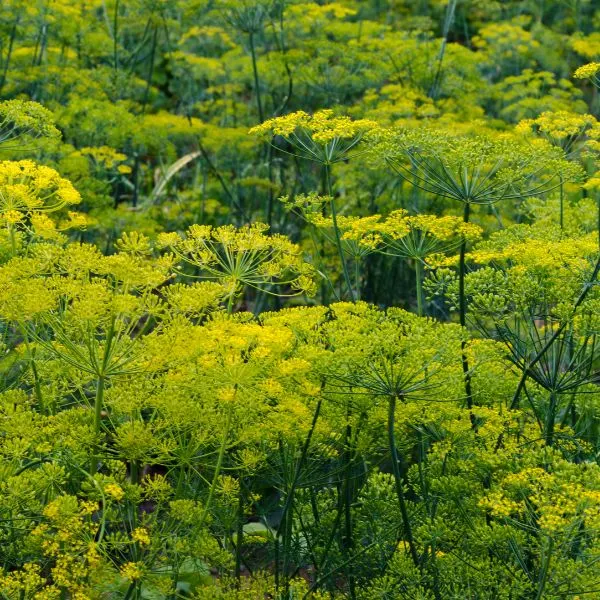
Another good companion plant for kale is dill. It is an annual herb in the celery family cultivated for its leaves and seeds, which may then be used as herbs or as seasoning for food.
Dill has long or deep taproots that dill has that break up heavy soils and loosen the soil. This reduces weed growth in the area. The herb attracts beneficial insects to your kale with its flowers while repelling the harmful ones with its scent.
Bees, butterflies, hover flies and ladybugs will be encouraged to visit your garden. They aid pollination while also preying on aphids, cucumber beetles and thrips, some enemies of your kale.
17. Mint

Mint is a genus of about sixty aromatic herbaceous flowering plants in the biological family Lamiaceae. Most plants in this genus are perennial, with wide spreading runners under, on or above the ground.
Various species of mint are good companion plants for kale. They have a bold and pungent smell that masks the more subtle smell of the brassica and protects it from the pests that would rather destroy it.
At the same time, their beautiful flowers attract pollinators, especially bees and butterflies, to your garden. Mint is best grown on its own in a separate container because it is a notorious spreader that could compete with kale.
18. Rosemary
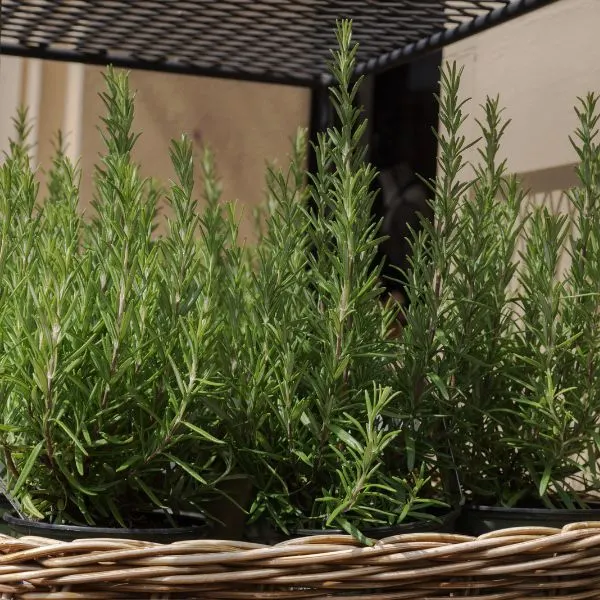
This is a woody flowering perennial plant belonging to the mint family Lamiaceae. The aromatic herb has thin, fragrant, evergreen and needle-like leaves. Rosemary is an aromatic herb grown for both medicinal and culinary purposes.
Rosemary produces tiny, beautiful flowers that can bring bees and other pollinators to your garden. Its flowers also attract butterflies and other flies that feed on nectar to help with pollination, aiding the reproduction of plants.
It also aids pest control too. It has a woody scent that is able to deter cabbage moths, carrot flies, mosquitoes and several other kinds of flies. It also has relatively short roots that do not compete with your kale for nutrients.
19. Sage
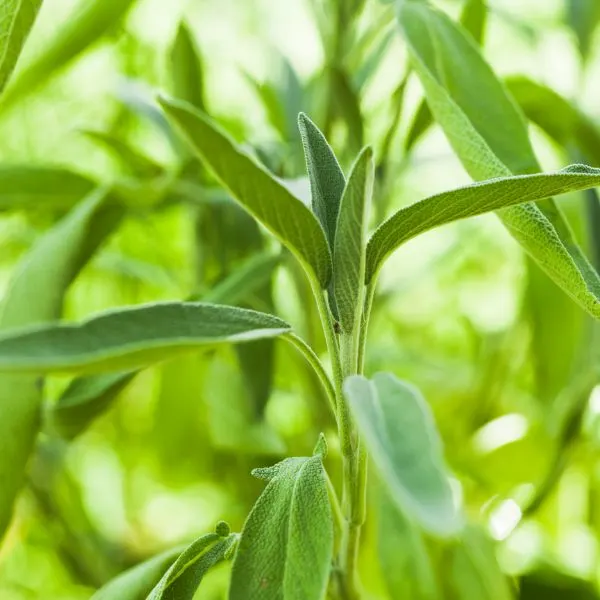
Sage is a herbaceous flowering plant that belongs to the mint family Lamiaceae. It has distinct grayish green leaves, bright purple flowers and a strong odor. It is a very good companion plant for kale.
They have similar needs so they can be cultivated together. Both appreciate direct or indirect exposure to the sunlight, with moist but well drained soil. Sage, however, needs less amounts of moisture for optimal growth.
Sage attracts predatory insects to feed on pests and nearby bugs, while harming neither the sage nor your kale plants. Its flowers also attract several pollinating insects to your garden. Its roots break up tough soil clumps, aerating deeper layers of the soil for kale’s benefit.
20. Thyme
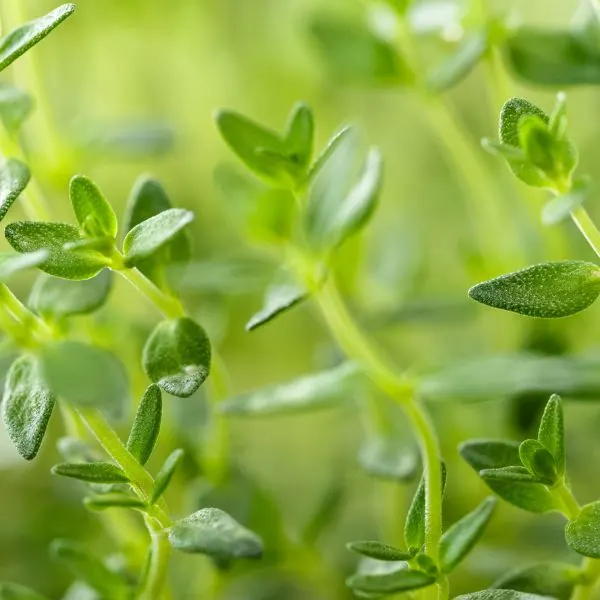
Thyme is another aromatic evergreen herbaceous plant in the mint family Lamiaceae. It is a perennial flowering plant closely related to mint, oregano and sage. It is yet another good companion plant for kale.
A herb like this one with a very strong scent may serve as a repellent for various insect and animal pests that attack beets and other garden crops. Thyme not only keeps pests away; it is able to attract beneficial animals to the area.
Planting thyme next to kale also helps prevent fungal diseases in the soil. Thyme has antifungal properties, as it contains thymol and carvacrol which make it suitable for preventing many fungal diseases.
Legumes
21. Beans

Beans are seeds of several genera of flowering plants that belong to the pea or legume family Fabaceae. Bean seeds (pulses) are consumed by boiling, frying, baking, cooking or some other method.
Beans are good companions for kale like most legumes are. Legumes are plants with nodules in their roots that help fix atmospheric nitrogen in the soil. By supplying nutrients to the soil, they improve the quality of the yield of plants near them.
These plants ensure that your brassica is getting the nutrients that it needs to grow healthy and properly, while maximizing the space in your garden as well (they can be used to mulch the soil when they die).
22. Peas
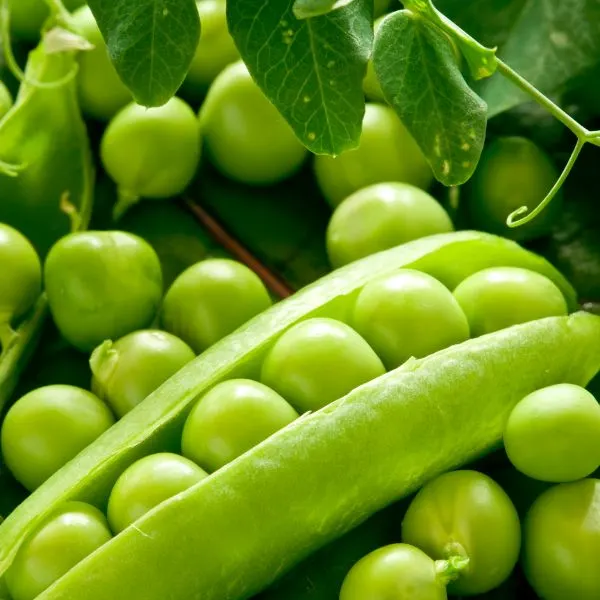
A pea plant is an annual herbaceous flowering plant in the biological family Fabaceae. Also known as garden pea, the plant is cultivated in various parts of the world for its edible seeds, known as peas.
As a legume, the pea plant helps fix nitrogen in the soil, serves as a cover crop and may be used as mulch after it is grown. Peas aid the conversion of atmospheric nitrogen into nitrates that other plants can absorb and use.
This nutrient aids the growth of the plants’ leaves. As a cover crop, the pea plant prevents erosion, conserves water in the soil, discourages the growth of weeds and stops the spread of pests and diseases. Mulching releases more nitrogen and protects the soil from water loss.
Nightshades
23. Peppers
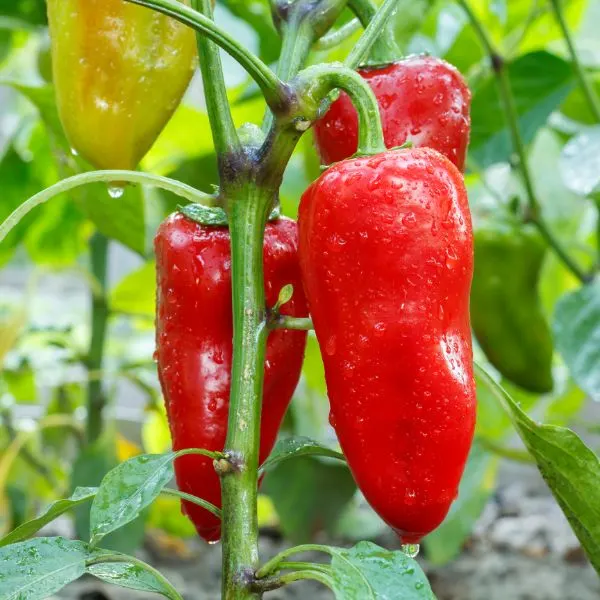
Pepper plants are flowering plants of the nightshade family Solanaceae, like eggplants and tomatoes. There are several species and cultivars of pepper plants existing. They produce peppers of various colors like red, yellow, orange and green.
Although peppers have deep taproots and are heavy feeders, they are good companion plants for kale. Competition can be reduced by proper spacing and growing legumes. Pepper plants are compact and can maximize space in your garden.
Peppers are also low maintenance plants. Their flowers attract pollinators like bees and butterflies. They deter aphids, cabbage worms, deer, mites and rabbits.
24. Potatoes
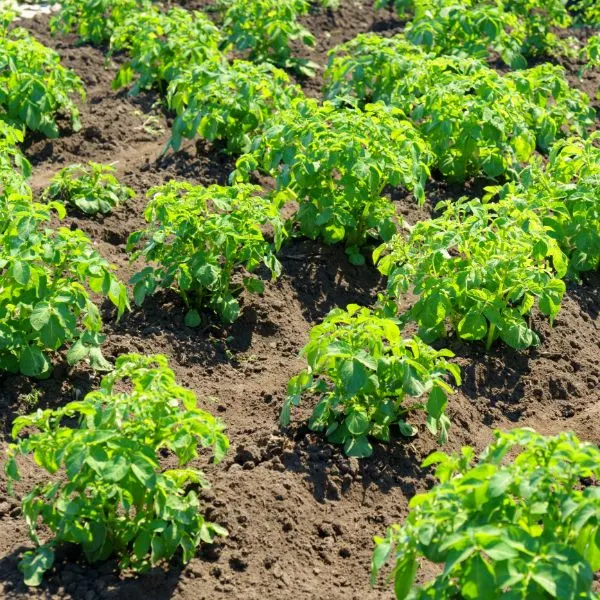
Potatoes are members of the nightshade family Solanaceae, like eggplants and peppers. They are perennial plants grown as root vegetables. These starchy tubers are also not suitable for growing near apple trees.
They serve as suitable companion plants for kale. Potatoes grow very comfortably in close proximity to kale and even attract beneficial insects to the vegetable. These insects aid pollination and prey upon plant pests.
(Root) Vegetables
25. Beets
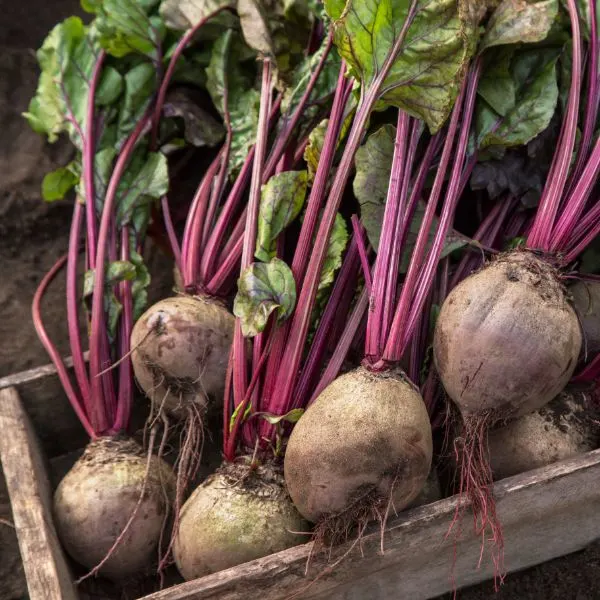
Beets are flowering plants that produce an edible and usually deep red taproot known as beetroot. The leaves of the plants, known as beet greens, may also be prepared and eaten as vegetables. They are good companion plants for kale.
Beets are light feeders so they do not compete with your kale for nutrients. Kale in turn provides ground cover and aids pest control. As a brassica, kale releases biotoxins: chemical compounds that may be toxic to pathogens and pests that live in the soil.
It protects beets from fungi, nematodes and some weeds. It also curbs the problems of erosion and spread of weeds by serving as good ground cover. Kale can capture nitrogen from the soil for the development of your beets.
26. Celery

Celery is a marshland plant grown to be consumed as a vegetable. Its leaves and stalks may be used in cooking but this depends on the variety and location of the plant. It is yet another vegetable that grows very well with kale.
It is ideal to grow celery with any vegetable in the cabbage family. Celery has aromatic leaves that deter pests like the white cabbage moth which are known for causing serious harm to the leaves of kale plants.
Celery also draws useful insects to your plant. This plant needs a lot of water to grow properly. Despite this, celery leaves enough nutrients in the soil for kale to grow well.
27. Radishes

A radish is a root vegetable belonging to the biological family Brassicaceae, the cabbage family. Its roots are edible and so are the leafy greens atop them. They may be eaten raw, which they mostly are, or cooked.
Radishes are good companions for kale. They loosen the soil surrounding your kale and allow it more room to absorb the water and nutrients that it needs. They mature quickly but have positive impacts.
While they are growing, they serve as ground cover and help suppress weeds. Because both plants are flowering crops, they can attract pollinators to your garden. This will help improve the growth and vigor of both plants.
What not to plant with kale
Brassicas
1. Broccoli
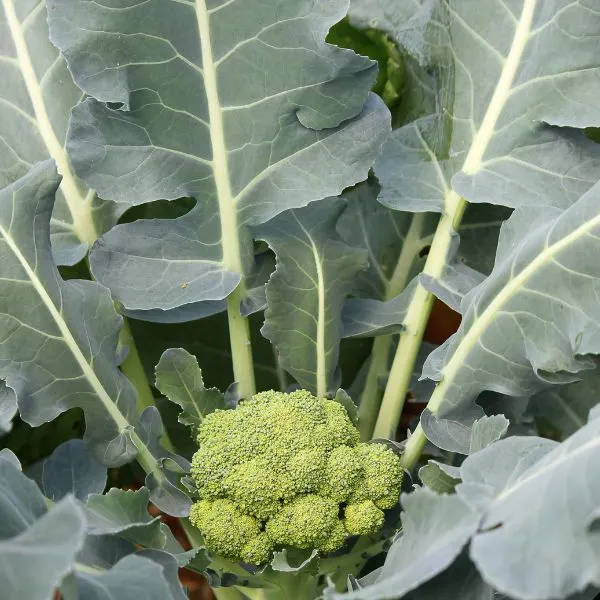
Broccoli is a flowering plant in the family Brassicaceae, the cabbage family. It has large, partly developed green flowers that make up its head. Its stalks and leaves are the edible parts of the plant, the main reason it is cultivated.
Avoid planting other brassicas beside your kale as this does not benefit any of them. Broccoli has a tendency to battle for soil nutrients with your kale because both plants are heavy feeders, requiring more nutrients than most other plants do.
In addition to needing and competing for similar nutrients, broccoli attracts several pests that also harm your kale to itself. These crops should be kept away from each other with good companions between them.
2. Brussels Sprouts
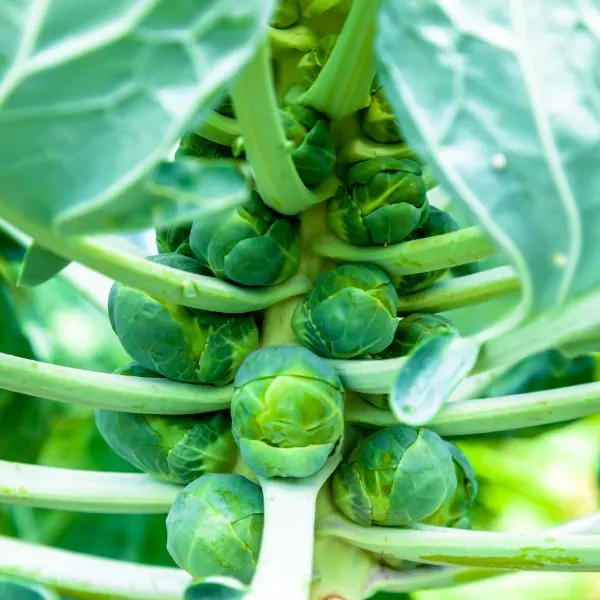
Brussels sprouts are flowering plants also in the cabbage family grown for their edible buds. They are green leafy vegetables resembling very small cabbages. As brassicas, they are also very bad companion plants for cabbages.
Kale and Brussels sprouts would battle for water, nutrients and space in the soil. They are both heavy feeders and would be adversely affected by this relationship. They are susceptible to attacks from similar pests as well.
Aphids, thrips, cabbage moths, cutworms, flea beetles, army worms and whiteflies are some pests brassicas are easily susceptible to.
3. Cabbage
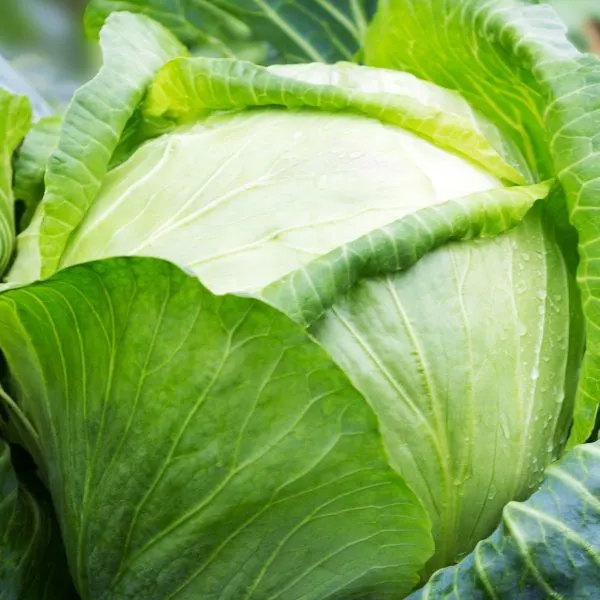
Cabbage is a flowering biennial plant mostly grown as a vegetable crop for its edible and tightly packed leaves. Its leaves are layered and may be white, red or green in color. It is also a bad companion plant for kale.
Like kale, cabbages are heavy feeders and they both have similar care requirements. Cabbages belong to the biological family Brassicaceae so it is not advisable to plant both of these crops side by side.
They would suffer from similar diseases and spread them easily. Pests of brassicas would be more attracted to them. Also, these plants would compete for water, space and nutrients within the soil.
4. Cauliflower
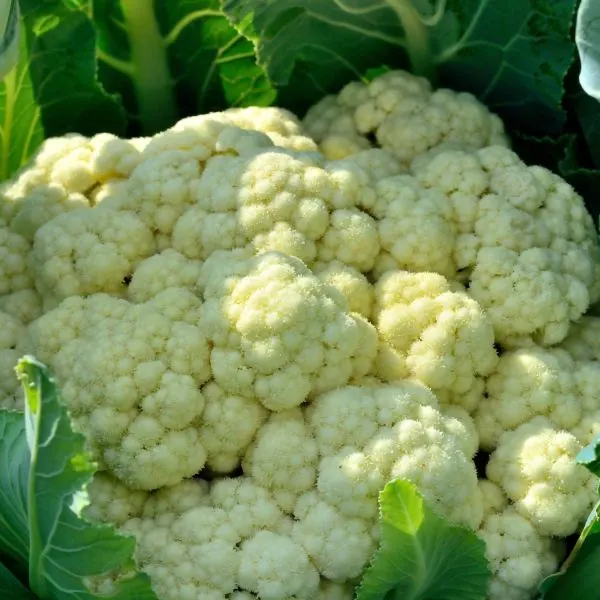
Cauliflower is another flowering plant in the Brassicaceae family, cultivated for its partially developed flowers, referred to as the head or “curd”. The head is edible and mostly in the colors white, yellow, green, orange, brown or purple.
It is also a bad companion plant for kale. Although growing them together is easy because they both belong to the same family and need similar amounts of light, water and nutrients, it leads to more problems than benefits.
Like with other brassicas, kale and cauliflower would battle for water, nutrients and space in the soil. Brassicas are susceptible to attacks from the same pests so they may be more attracted to that area of your garden.
5. Kohlrabi
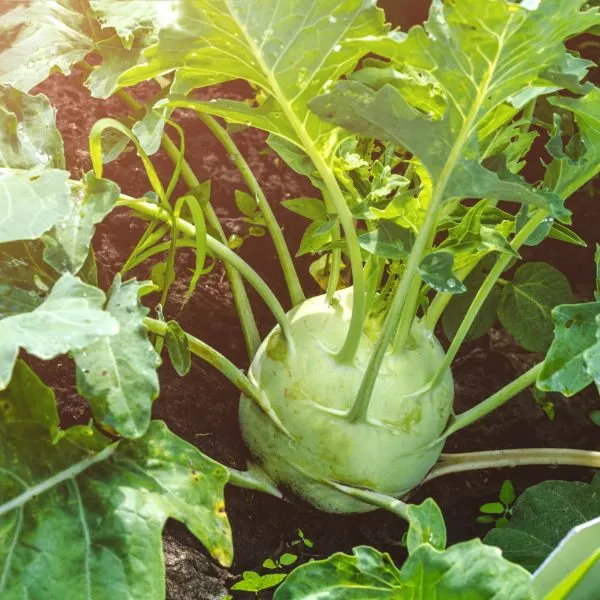
Another brassica you should not plant with kale is kohlrabi. It is a variety of wild cabbage with thin stems and yellow flowers also known as the German turnip. Its stems and leaves are edible and it tastes very much like cabbage.
As with other plants within this cabbage family, separate kale from kohlrabi. This avoids the unnecessary and unhealthy competition for root space and soil nutrients that would otherwise occur if they are planted side by side.
Companionship involving these two would ensure that pests and diseases will be easily distributed and transmitted in such an area in addition to the competition. Both plants would not fare well, or one would thrive while the other dies.
Others
6. Black Walnuts
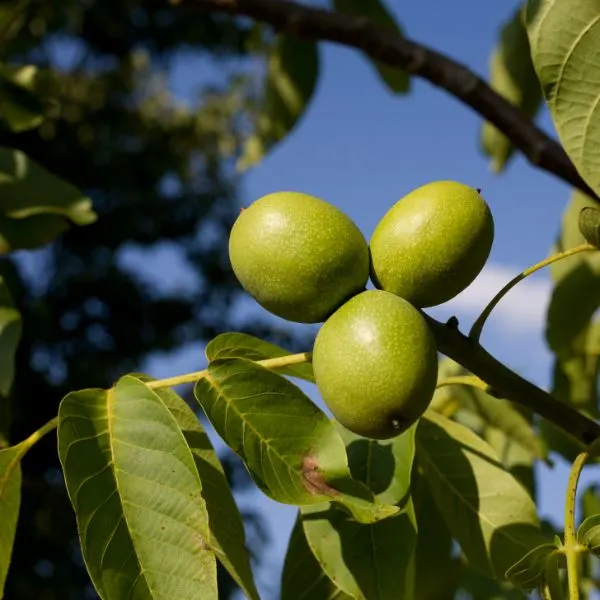
Also known as eastern American black walnut (because it is native to the riparian zones of North America), black walnut is a species of deciduous trees in the walnut family. It is grown for its distinctive, alluring taste, used for both timber and food.
It is not ideal to grow black walnut trees with kale. Although they both like full exposure to the sun, moist but well drained soil and consistent watering, they are not to be planted side by side.
This is because the black walnut releases a chemical into the soil. This compound, called juglone, can prevent kale and other plants from reaching their full potential. It may slow their growth down or stop it entirely.
7. Lettuce
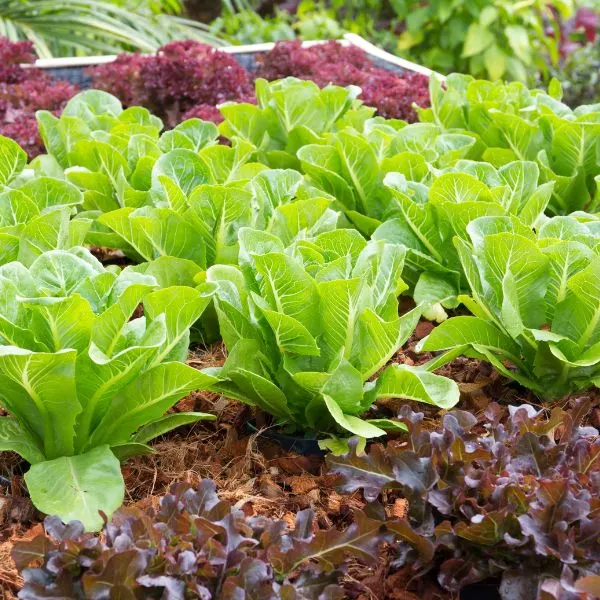
Also grown for its stem and seeds, lettuce is a flowering annual plant mostly cultivated for its leaves, used as a leaf vegetable. It is most often eaten in salads but may be added into other foods.
Lettuce and kale do not grow well near each other. Although they both like full exposure to sunlight and moist soil, the plant attracts several pests and would need to be planted near crops that would protect them from pests.
Lettuce attracts slugs, aphids, cabbage loopers, caterpillars, cutworms, flea beetles, leaf miners, thrips, weevils and whiteflies. Planting it with kale will only attract these pests to the area and reduce the viability of your brassica.
8. Strawberries

Strawberries are low perennial herbs with many runners and white flowers. They produce edible fruits which are small achenes scattered on the surface of an expanded red pulpy berry. They are very bad companion plants for kale.
Strawberries are not ideal for cultivation beside any brassica because they contain allelochemicals which can inhibit the growth of your kale. They also attract pests like slugs and snails that eat away at the leaves of brassicas.
9. Sunflowers
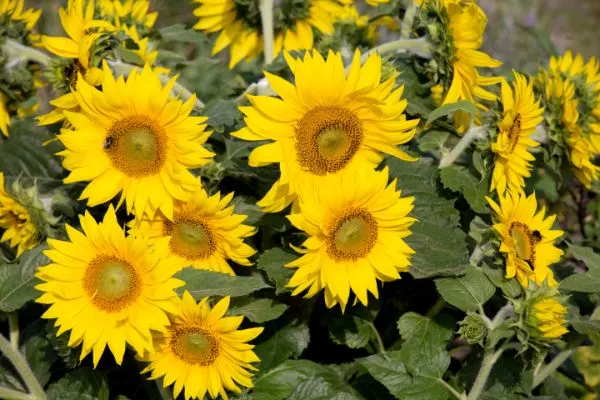
A sunflower is any species of annual and perennial plants that belong to the genus Helianthus in the family Asteraceae, the daisy family. They bear flowers which have large heads, dark disk florets and flamboyant yellow rays.
Do not plant sunflowers beside your kale. The moisture needs of these plants are quite different. Sunflowers prefer dry soil over wet soil although they tolerate moisture in well drained soil.
Sunflowers are susceptible to attacks from several plant pests that could also harm your kale, including curculios and snout beetles. Keep these plants away from each other.
10. Tomatoes
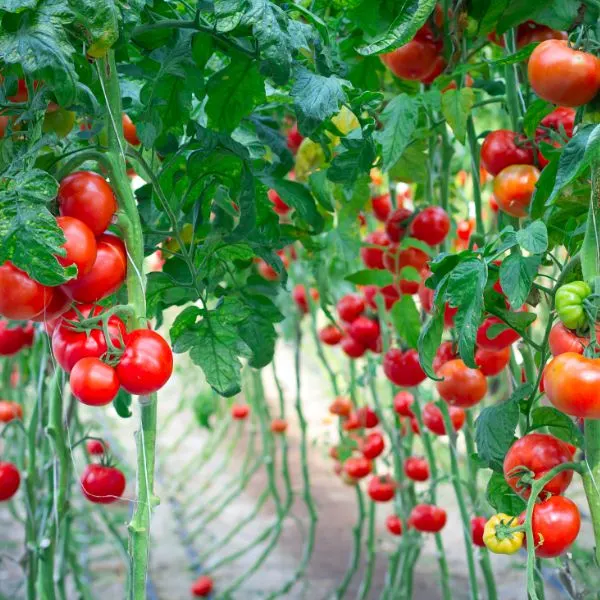
Tomatoes are South American plants of the nightshade family Solanum. They produce a widely grown mildly acidic fruit also known as tomato, with many varieties. Tomatoes are a glossy red or yellow color, pulpy and edible, eaten raw or cooked.
Planting tomatoes and kale side by side can cause harm to both plants. Tomato is a heavy feeder and would take up much nutrients from the soil. As a heavy feeder itself, kale also needs a good amount of soil nutrients.
Brassicas generally stunt the growth of tomatoes with their own allelochemicals. Allelochemicals are biochemicals that influence development processes like germination, growth, survival and reproduction of other organisms. Tomatoes can inhibit and stunt the growth of kale and other brassicas.
11. Zucchini
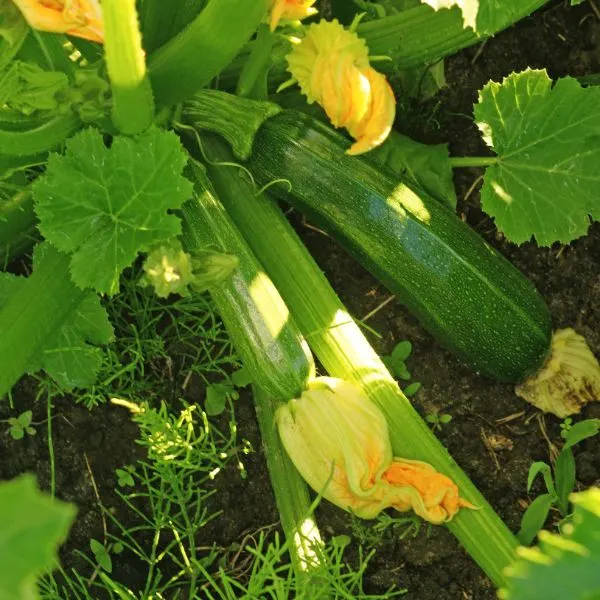
The vining plant called eggplant is also referred to as baby marrow, courgette or zucchini. It is a summer squash, a herb grown for its fruits which are harvested when they still have immature seeds and soft rinds that are edible.
It belongs to the cucurbit family Cucurbitaceae. Like plants in the cabbage family, nightshades tend to be heavy feeders as well. For this reason, competition can arise between them if your kale and zucchini are planted together.
They could compete for soil nutrients, sunlight, root space or water. Kale and zucchini could also attract a number of common pests to the area in which they are cultivated. Avoid planting them together.
Kale companion planting chart

Common questions about kale
What grows well with kale?
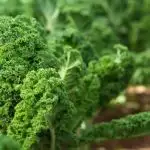
Generally, plants that grow well with kale are alliums (chives, garlic, leeks, onions, scallions, shallots), a few brassicas (beets, radishes), celery, cucumbers, flowers (alyssum, calendula, hyssop, marigolds, nasturtiums), herbs (basil, catmint, chamomile, cilantro, dill, lemongrass, mint, rosemary, sage, thyme), legumes (alfalfa, beans, lentils, peas, soybean) and nightshades (peppers, potatoes).
What should not be planted next to kale?
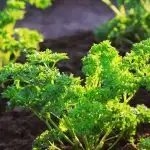
Some crops that should not be planted next to kale are black walnuts, broccoli, Brussels sprouts, cabbages, cauliflower, kohlrabi, lettuce, strawberries, sunflowers, tomatoes and zucchini.
Can I plant kale next to peppers?
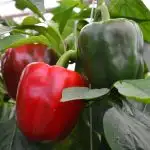
Yes, you can plant kale next to peppers. Peppers are good companion plants for kale.
Can kale and tomatoes be planted together?
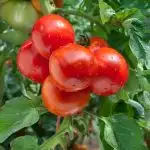
Kale and tomatoes should not be planted together. Tomatoes contain allelochemicals that can end up stunting the growth of your kale and other plants within its family Brassicaceae.
Can i grow lettuce and kale together?
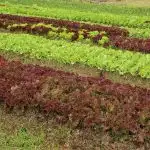
Yes, you can grow lettuce and kale together. Both lettuce and kale are cool-season crops that have similar growing requirements, such as preferring well-draining soil, consistent moisture, and cooler temperatures.
Conclusion
Kale is a cultivar of the common cabbage cultivated for its edible green or purple leaves or for use as an ornamental plant. Listed and explained above are twenty seven (27) good and eleven (11) bad companion plants for kale.
When consumed raw, kale leaves contain mostly water (about 84%), then carbohydrates, protein and very little amounts of fat. They are also rich in vitamins and minerals.
Kale provides the body several vitamins and minerals such as vitamins A, B1 (thiamine), B2 (riboflavin), B3 (niacin), B5 (pantothenic acid), B6, B9 (folate), C, choline, E and K, calcium, iron, magnesium, manganese, phosphorus, potassium, sodium and zinc.
Some health benefits of eating kale include that the plant may help: strengthen the bones, eyes and immune system, protect the body from colds and chronic diseases, in blood clotting (formulation of blood clots), build the bones and assist brain development.
Kale is also a cruciferous vegetable that protects heart health, reduces the chances of cancer in the body and strengthens the body against various diseases because of the many antioxidants it contains.
While growing kale, remember that it needs to be exposed to full sun, for 6 or more hours daily. It is best grown in soil which is rich in organic matter, well-drained and consistently moist. Its pH should be between 6.5 and 6.8 and it should be well watered at intervals to maintain good levels of moisture.
More companion plants
